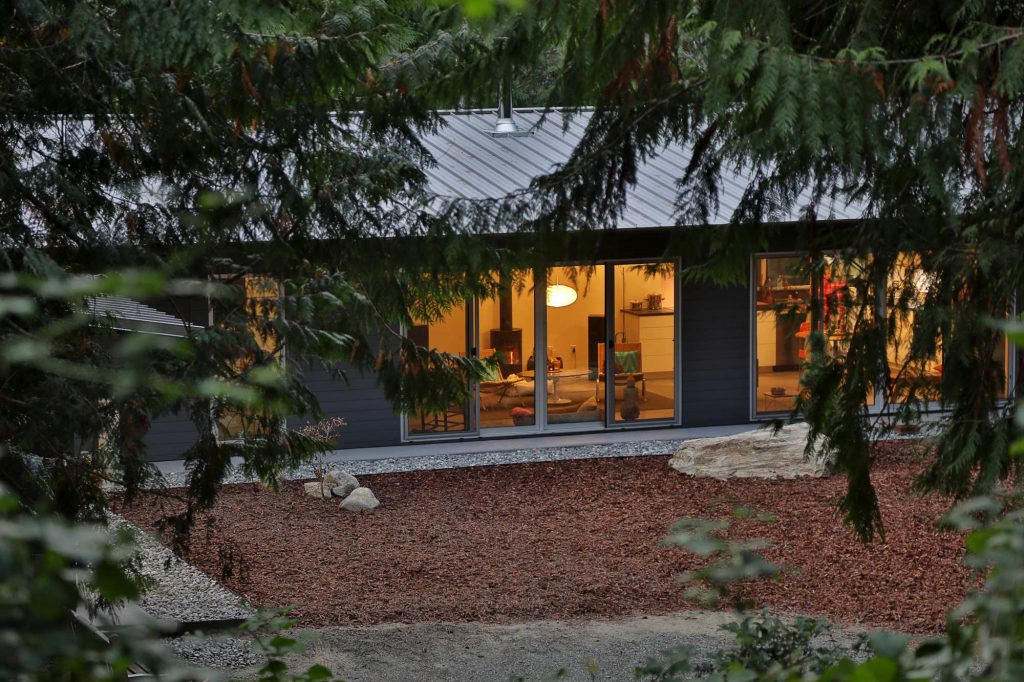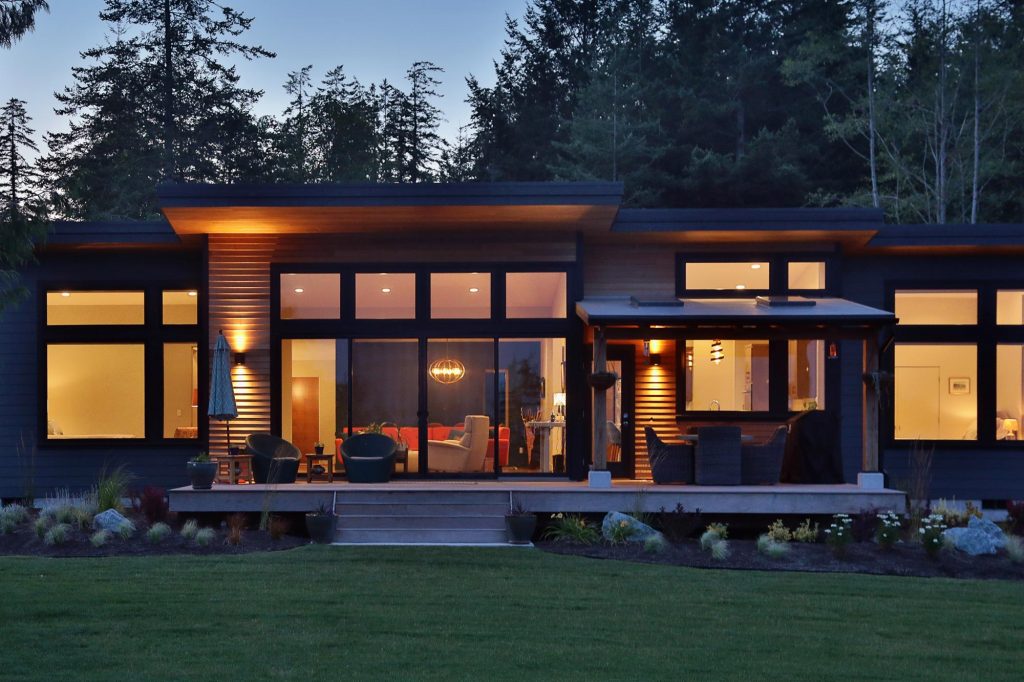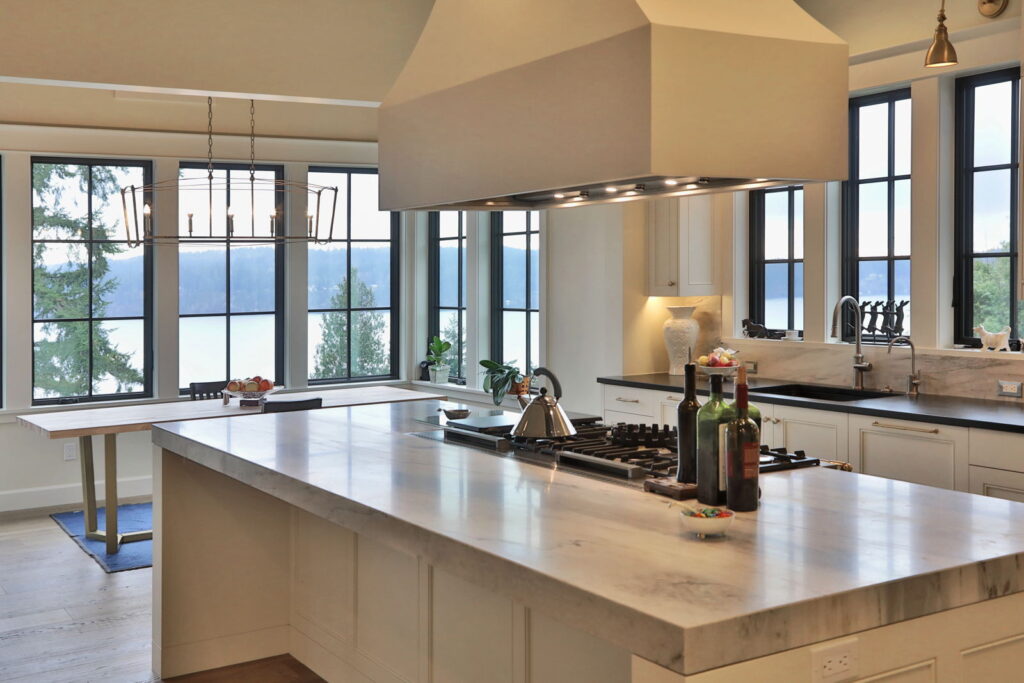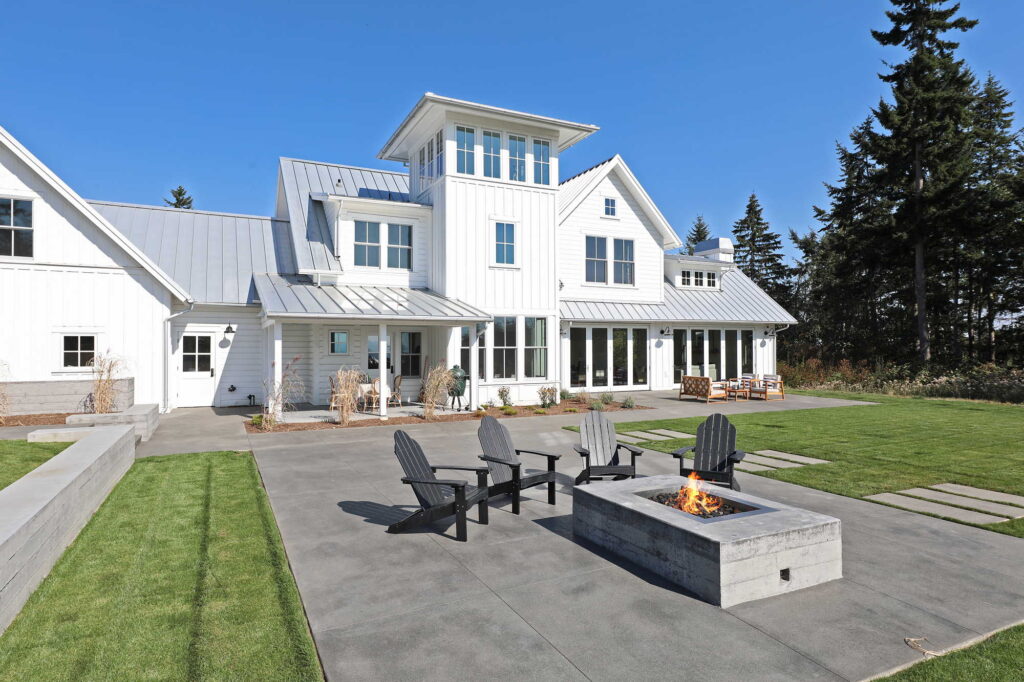Custom home building on Whidbey Island is different than building on the mainland. This is especially true if you wish to build your dream home in a remote location.
But you shouldn’t be discouraged by the complexities of building in such a beautiful place. We’ve created a list of problems that we’ve seen crop up time and time again so you can avoid mistakes that will cost you money or time.
1. Not Understanding the Challenges of a Remote Location
People are drawn to Whidbey Island for its dramatic scenery and outdoor lifestyle. The beaches and dense forests are stunning here!
And like any place in the US, Whidbey Island has specific building codes and regulations. What people are often unaware of is that Whidbey Island has many MORE:
• Zoning Regulations
• Environmental Factors
• Infrastructure Challenges
Thus, you need to know how the factors listed above will affect your custom home building project.

Whidbey Island Forest Home by Boren Construction
2. Skipping Professional Guidance from a Custom Home Builder Early in the Process:
If you’ve built a custom home before, you know that generally one first works with a realtor to purchase an available site or property. Then later you hire an architect and finally a custom home builder.
For Whidbey Island a different strategy is required.
We find that building a relationship with both a realtor AND a custom home builder from the start can save you from buying a property that is unbuildable OR prohibitively expensive to build on.
To spell it out clearly, you want to know which of these possible factors apply to your desired custom home site.
• How will electricity, water, and sewage services be accessed or supplied? i.e. off the grid, need a septic tank.
• How stable is the soil or slope, and will it require a special structure like steel pylons to build?
• Will the house require non-flammable exterior walls and roof because of wildfires?
• Is it in an environmentally sensitive or a protected area for flora or fauna?
• Lastly, will it need significant protection from Winter storms?
There are locations on Whidbey Island that have zoning regulations, environmental factors, or infrastructure challenges that will increase your build out time and cost a great deal, sometimes prohibitively. You want to go into your project knowing the challenges and likely cost.

Modern Home on Whidbey Island by Boren Construction
3. Underestimating Budget Requirements:
Custom home building often comes with unforeseen expenses, especially with the factors we’ve been discussing.
It’s essential to create a budget that includes not only the construction costs but also permits, fees, landscaping, and potential overruns. A thorough financial plan and a contingency fund can help you navigate unexpected costs without jeopardizing the project.
4. Poor Communication with Contractors:
Effective communication is the cornerstone of any successful custom home project. Misunderstandings, delays, and errors can arise if there’s a lack of clear communication between you and the home builder. Regular meetings, progress updates, and addressing concerns promptly can help keep the project on track.
5. Overlooking Future Resale Value:
Keep in mind that overly personalized features may limit the market appeal of your home in the future. If you are concerned about resale value, ask your realtor, architect, or home builder for guidance to help avoid features that will make your custom house hard to sell.

Home with a View on Whidbey Island by Boren Construction
6. Rushing the Design Phase:
Rushing through the design stage can lead to costly changes during construction, and disappointment with your home. Take the time to work with your architect and ensure the design aligns with your vision.
7. Not Considering Long-Term Maintenance:
Ask your architect or custom home builder to steer you toward materials and a design that will not present maintenance issues.
One example of a popular feature that has pros and cons are marble kitchen counters. If you cook a great deal, you may find that marble is prone to chips, stains, and etching. It also needs to be resealed annually. But if you love the look and don’t use your kitchen intensively, it could be an excellent choice.
8. Planting Non-Native Plants
Planting a native landscape will help the house blend into the building site and create a harmonious environment for your home. It’ll also keep down water and plant replacement costs, as the native plants are more likely to thrive on Whidbey Island.

Remote Hilltop Retreat on Whidbey Island by Boren Construction
As they say, a lot of success is in the planning.
Much of the success to custom home building on Whidbey Island is meticulously planning in the initial stage to select a home site you that meets your needs and desires.
Our recommendations will help you avoid a custom home project that is excessively expensive or will get stuck in the permitting process. As most of us don’t want to become experts in zoning regulations, you want to select a local custom home builder who will advise you in advance of the many Whidbey Island regulations.
Boren Construction is Whidbey Island’s premier custom home builder, well known for our skilled execution of high end residential projects.
Our construction process has set a new standard in the residential construction industry, leveraging cloud based technology to create a transparent and productive environment which allows us to provide the highest level of service to our clients.
Founded in 2001 by LeRoy Boren, we put our client’s needs first, creating a team environment based on continuous improvement and the daily practice of excellence. With projects throughout Whidbey Island including Clinton, Langley, Freeland, Greenbank and Coupeville, the Boren Construction team has the experience necessary to build dwellings that are both timeless and bespoke.







